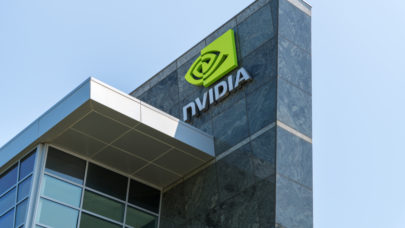
Researchers Present Vision for HPC Fusion Data Gateway
January 21, 2023
Fusion energy is having a moment – an increasingly fruitful one – but as radio astronomers and particle physicists know, bigger and better experiments and s Read more…

Supercomputing’s Critical Role in the Fusion Ignition Breakthrough
December 21, 2022
On December 5th, the research team at the National Ignition Facility (NIF) at Lawrence Livermore National Laboratory (LLNL) achieved a historic win in energy sc Read more…

At GTC22, HPC and AI Get Edgy
March 30, 2022
From weather sensors and autonomous vehicles to electric grid monitoring and cloud gaming, the world’s edge computing is getting increasingly complex — but the world of HPC hasn’t necessarily caught up to these rapid innovations at the edge. At a panel at Nvidia’s virtual GTC22 (“HPC, AI, and the Edge”), five experts discussed how leading-edge HPC applications... Read more…

Eyeing Nvidia’s Omniverse for Fusion Reactor Design
March 25, 2022
With climate change accelerating and fossil fuel supplies proving increasingly contentious, ensuring a secure supply of clean energy is top-of-mind for many res Read more…

New Algorithm Overcomes Hurdle in Fusion Energy Simulation
January 15, 2022
The exascale era has brought with it a bevy of fusion energy simulation projects, aiming to stabilize the notoriously delicate—and so far, unmastered—clean Read more…

UK’s New Extreme Scale Computing Center to Advance Fusion Energy
August 19, 2021
As the world barrels toward a dark climate future, many people’s hopes increasingly rest with major technological breakthroughs – including, perhaps most fa Read more…

Supercomputer Research Investigates Fusion Instabilities
May 26, 2021
Inertial confinement fusion (ICF) experiments is a speculative method of fusion energy generation that would compress a fuel pellet to generate fusion energy ju Read more…

Supercomputer-Powered Machine Learning Supports Fusion Energy Reactor Design
February 25, 2021
Energy researchers have been reaching for the stars for decades in their attempt to artificially recreate a stable fusion energy reactor. If successful, such a Read more…

- Click Here for More Headlines

Whitepaper
Transforming Industrial and Automotive Manufacturing
In this era, expansion in digital infrastructure capacity is inevitable. Parallel to this, climate change consciousness is also rising, making sustainability a mandatory part of the organization’s functioning. As computing workloads such as AI and HPC continue to surge, so does the energy consumption, posing environmental woes. IT departments within organizations have a crucial role in combating this challenge. They can significantly drive sustainable practices by influencing newer technologies and process adoption that aid in mitigating the effects of climate change.
While buying more sustainable IT solutions is an option, partnering with IT solutions providers, such and Lenovo and Intel, who are committed to sustainability and aiding customers in executing sustainability strategies is likely to be more impactful.
Learn how Lenovo and Intel, through their partnership, are strongly positioned to address this need with their innovations driving energy efficiency and environmental stewardship.
Download Now
Sponsored by Lenovo
Whitepaper
How Direct Liquid Cooling Improves Data Center Energy Efficiency
Data centers are experiencing increasing power consumption, space constraints and cooling demands due to the unprecedented computing power required by today’s chips and servers. HVAC cooling systems consume approximately 40% of a data center’s electricity. These systems traditionally use air conditioning, air handling and fans to cool the data center facility and IT equipment, ultimately resulting in high energy consumption and high carbon emissions. Data centers are moving to direct liquid cooled (DLC) systems to improve cooling efficiency thus lowering their PUE, operating expenses (OPEX) and carbon footprint.
This paper describes how CoolIT Systems (CoolIT) meets the need for improved energy efficiency in data centers and includes case studies that show how CoolIT’s DLC solutions improve energy efficiency, increase rack density, lower OPEX, and enable sustainability programs. CoolIT is the global market and innovation leader in scalable DLC solutions for the world’s most demanding computing environments. CoolIT’s end-to-end solutions meet the rising demand in cooling and the rising demand for energy efficiency.
Download Now
Sponsored by CoolIT
Advanced Scale Career Development & Workforce Enhancement Center
Featured Advanced Scale Jobs:
HPCwire Resource Library
HPCwire Product Showcase
© 2024 HPCwire. All Rights Reserved. A Tabor Communications Publication
HPCwire is a registered trademark of Tabor Communications, Inc. Use of this site is governed by our Terms of Use and Privacy Policy.
Reproduction in whole or in part in any form or medium without express written permission of Tabor Communications, Inc. is prohibited.
























